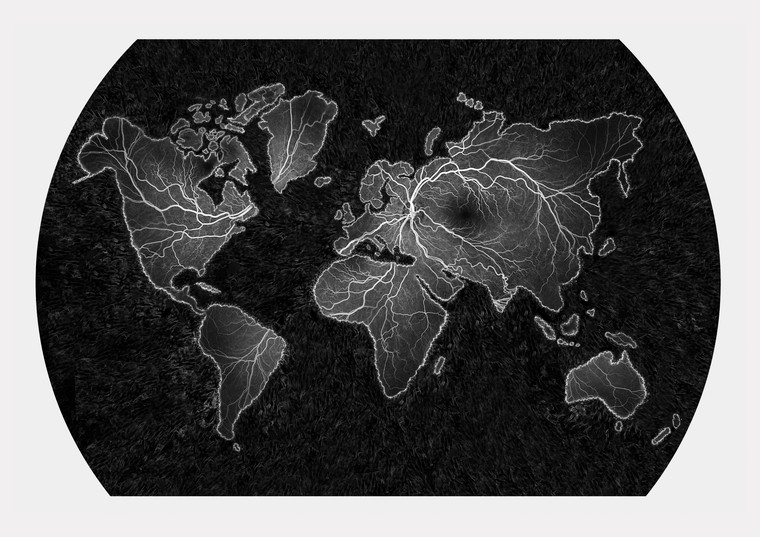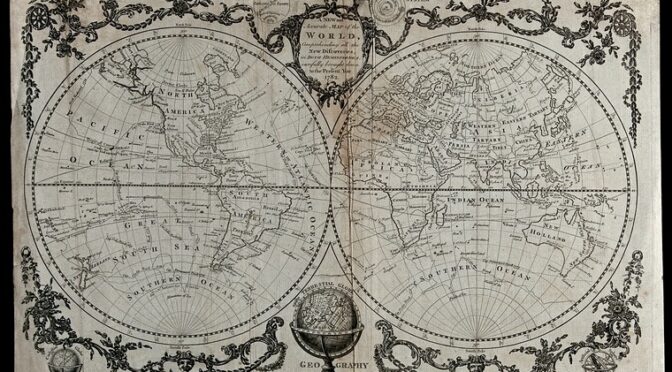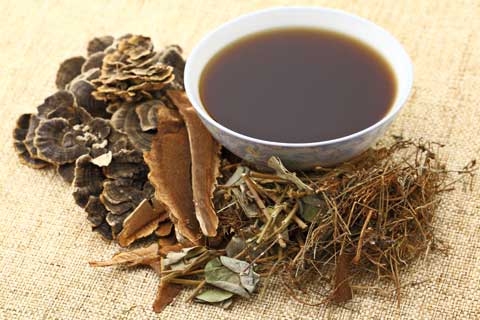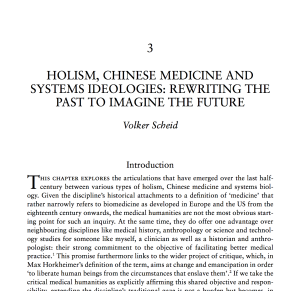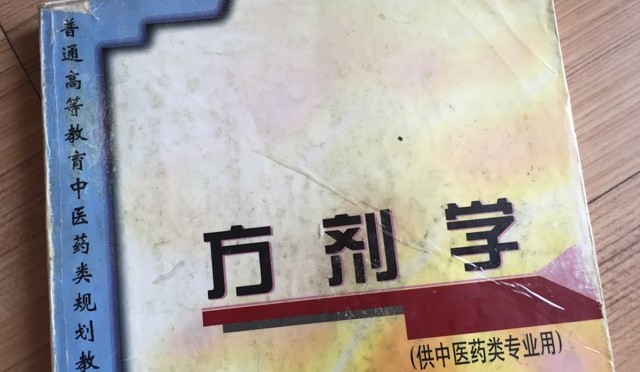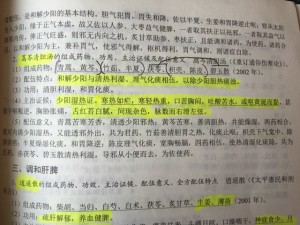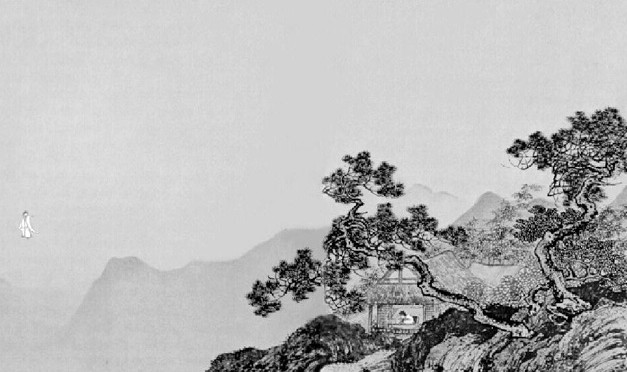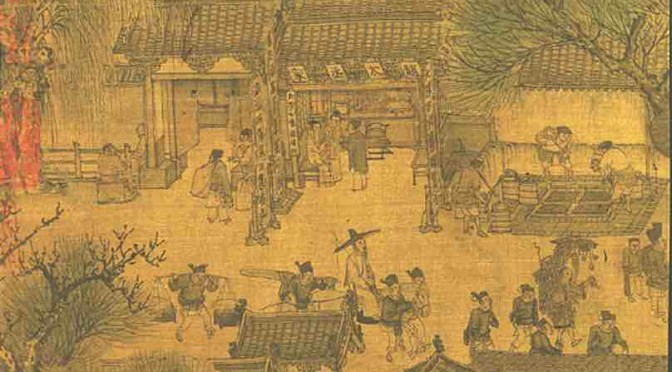Treatment periods are rarely discussed in classical Chinese medical literature. While classics like the Shanghan Lun meticulously describe formula preparation and administration over the course of a day, the number of days a formula should be used for is never plainly described. Due to this ambiguity, many physicians apply a saying that originates in the Huangdi Neijing to classical formula use, “after one dose one knows, after two doses there is resolution.”[i]
However, by examining powder and pill formula dosage, we can gain more specific insight into classical treatment timeframes. Whereas with liquid decoctions the written herb weights compose a single day’s worth of formula, with powders the daily dose is fixed at a few grams and the herb weights define a formula’s projected treatment period.
This article is an exploration into the treatment periods and patterns for four foundational classical formula powders, accurate weights and measures based on Han period archeological evidence, and the drinks traditionally used to aid powder consumption. The goal is to provide insight into how and why classical clinicians used medical powders.
Classical Weights
A liang (兩) is the core unit of weight used in classical Han dynasty formulas. Though there has been some debate as to the exact weight of a classical liang throughout Chinese history, and a great deal of inaccuracy in modern texts, recent archeological findings indicate that a liang weighed between 13.8 and 15.6 grams. Contemporary doctors in mainland China generally simplify a classical liang’s weight to 15g. A classical Liang can be subdivided into 24 zhu (銖) or four fen (分). 16 Liang combine to make one jin (斤)[iii]. The table below describes the weight of each measurement unit:
Table 1. Han Period Weight Units
| Measure Unit |
Approximate Weight |
Simplified Weight |
| Jin 斤 |
220.8g to 249.6g |
240g |
| Liang 兩 |
13.8g to 15.6g |
15g |
| Fen 分 |
3.45g to 3.9g |
3.75g |
| Zhu 銖 |
0.575g to 0.65g |
0.625g |
Single doses of powdered formulas were most commonly dosed by heaping powder onto a fangcunbi (方寸匕, Square Inch Spoon) or a qianbi (錢匕, Coin Spoon). The cun (寸), a classical unit of measurement, is 2.32cm long.[iv] Therefore, a square cun measures 5.4 cm2 in area. The Zhongyao Da Cidian (中藥大辭典, Great Encyclopedia of Chinese Medicine) states that a fangcunbi weighs 2g for metal and stone powders and 1g for plant powders. However, the actual tested weights are somewhat heavier, causing researcher Li Yuhang (李宇航) to conclude that plant powders should be dosed at 1-2g and mineral powders at 3-4g[v]. A portion of his findings is translated on the following table:
Table 2. Actual Fangcunbi Powder Weights
| Formula |
Actual Weight |
| Wu Ling San 五苓散 |
1.59g |
| Muli Zexie San 牡蠣澤瀉散 |
1.27g |
| Banxia San 半夏散 |
1.46g |
| Sini San using Baishao 四逆散(白芍) |
1.66g |
| Sini San using Chishao 四逆散(赤芍) |
1.68g |
| Chishizhi (in Taohua Tang) 赤石脂(桃花湯) |
3.31g |
| Wenge San 文蛤散 |
3.33g |
The qianbi dose was measured using the Han Dynasty wuzhuqian (五銖錢, five zhu coin). The coin’s radius measures 2.5cm and it has an approximately 1 cm2 square hole in the center. Assuming a finger is used to plug the square hole in the center of the coin when used as a scoop, the area measures 4.9 cm2, giving it roughly 10% less area than the fangcunbi.
For the purposes of this article, I simplified unknown formula powder weights to 1.66g per dose for a fangcunbi and 1.5g for a qianbi. Given that most formulas suggest three daily doses this works out to 5g total per day for the fangcunbi and 4.5g per day for the qianbi.
Intake Methods
Classically, powders are stirred into a warm liquid and drank. The choice of liquid gives additional insight into the formula’s purpose and should be considered an essential part of powdered formula construction. The main liquids used for powder administration in the Shanghan Lun and Jingui Yaolue are baiyin (白飲, the water from boiled rice[vi], also called miyin 米飲), maizhou (麥粥, wheat porridge), jiangshui (漿水, fermented millet water), jiu (酒 rice wine, likely analogous to modern huangjiu 黃酒) and water. In formulas that don’t specifically mention what drink to use, Ge Hong and Sun Simiao suggest that any of the above can be used[vii], presumably leaving the choice of liquid assistant to the practitioner.
Table 3. Liquid Assistants for Powder Administration
| Liquid |
Function |
Formulas |
| Baiyin (白飲, boiled rice water) |
Sweet, balanced. Strengthens earth harmonizes the middle qi, separates clear from turbid, generates fluids;stops thirst; promotes urination. |
Sini San, Wu Ling San, San Wu Xiao Bai San, Muli Zexie San.Rice is also used in Baihu Tang, Taohua Tang, and Zhuye Shigao Tang. |
| Maizhou (麥粥, wheat porridge) |
Sweet, slightly bitter, cool. Eliminates heat, stops thirst and dry throat, promotes urination, nourishes liver qi. |
Zhishi Shaoyao San, Baizhu San (modification).Wheat is also used in Gan Mai Dazao Tang. |
| Jiangshui (漿水, fermented millet water) |
Sweet, sour, cool. Regulates the stomach, dissolves food obstructions, stops thirst. |
Chixiaodou Danggui San, Shuqi San, Banxia Ganjiang San, Baizhu San (modification).Jiangshui is also used in Zhishi Zhizichi Tang. |
| Jiu (酒, rice wine) |
Bitter, acrid, warm. Invigorates the channels, unblocks obstruction syndrome, warms the blood, scatters blood stasis. |
Danggui Shaoyao San, Danggui San, Baizhu San, Tianxiong San, Zishi Han Shi San, Tuguagen San. |
A Selection of Powdered Formulas
According to Dr. Li Yuming,[viii] Zhang Zhongjing uses internal powdered formulas primarily to treat diseases of the lower jiao, especially recalcitrant conditions that involve blood deficiency and or fluid accumulation. Below I have selected four representative formulas that each demonstrate a specific lower jiao pathology and can be considered foundational building blocks for individualized powdered formula construction.
Sini San 四逆散, Frigid Extremities Powder
| SiniSan |
SHL Text Weight |
Gram Weight |
| Zhi Gancao 炙甘草 |
10 Fen分 |
37.5g |
| Zhishi 枳實 |
10 Fen分 |
37.5g |
| Chaihu 柴胡 |
10 Fen分 |
37.5g |
| Shaoyao 芍藥 |
10 Fen分 |
37.5g |
| Total Formula Weight |
40 Fen分 |
150g (138g-156g) |
| Single Dose Weight |
1 Fangcunbi |
1.66g-1.68g |
| Daily Dose Weight |
3 Fangcunbi |
5g (4.98g-5.04g) |
| Treatment Period |
30 Days (27.3-31.3days) |
| Administered With |
Baiyin白飲 (Boiled Rice Water) |
Sini San treats Liver qi stagnation that manifests with cold hands and feet, possibly with cough, palpitations, inhibited urination, abdominal pain, or diarrhea with tenesmus, emotional distress, depression, chest and rib distention or pain, or breast distention pain, with a white tongue coat, and a thin wiry pulse.[ix]
According to the Shennong Bencao Jing (《神農本草經》The Divine Husbandman’s Classic of Materia Medica), Chaihu’s bitter, balanced nature has the ability to eliminate knotted qi and food accumulations from the GI tract.[x] Zhishi’s bitter, cool, slightly acrid and sour nature assists Chaihu by breaking up stagnant qi, reducing distention and pain from accumulation and directing the qi of the GI tract downwards. Shaoyao’s bitter, sour and slightly cool nature nourishes the liver, preserves yin, and according to the Mingyi Bielu (《名醫別錄》Miscellaneous Records of Famous Physicians) eliminates blood stasis, expels water, and benefits the bladder and intestines.[xi] Zhi Gancao’s sweet, warm nature nourishes the middle qi. Rice water’s bland, sweet and balanced nature is used to administer the formula to build thin fluids, regulate fluid metabolism, and benefit the spleen and stomach.
The Sini San pattern shows signs of dryness, blood deficiency, qi knotting, and food accumulations in the GI tract, and resultant lower jiao yang qi depression. The formula is overall cool and bitter, with hints of acrid, sour, and sweet and should be considered a light purgative with elements of qi and blood building. Sini San’s light dose and ability to enter the lower jiao is aimed at slowly purging the intestines without stressing the body’s upright qi. Due to the purgative nature, caution should be used when exceeding the projected treatment period of 30 days.
Wu Ling San 五苓散, Five Poria Powder
| Wu Ling San |
SHL Text Weight |
JGYL Text Weight |
Gram Weight |
| Zexie 澤瀉 |
1 Liang 兩 6 Zhu 銖 |
1Liang兩1Fen分 |
18.75g |
| Zhuling 豬苓 |
18 Zhu銖 |
3Fen分 |
11.25g |
| Fuling 茯苓 |
18 Zhu銖 |
3Fen分 |
11.25g |
| Baizhu 白術 |
18 Zhu銖 |
3Fen分 |
11.25g |
| Guizhi 桂枝 |
½ Liang兩 |
2Fen分 |
7.5g |
| Total Formula Weight |
4 Liang |
60g (55.2g-62.4g) |
| Single Dose Weight |
1 Fangcunbi |
1.59g |
| Daily Dose Weight |
3 Fangcunbi |
4.77g |
| Treatment Period |
12 days (11.6 – 13.1 days) |
| Administered With |
Baiyin白飲 (Boiled Rice Water) |
Wu Ling San treats a number of symptom patterns, all of which revolve around dampness accumulation in the lower jiao resulting in some degree of yang qi depression and heat. The primary acute pattern manifests with headache, low fever, irritability, aversion to cold, dry mouth and thirst, possibly with vomiting upon drinking, and urinary obstruction. Other variants include diabetic thirst and edema patterns.
Zexie, Zhuling, and Fuling’s overall bland and cool natures act to leach out dampness, promote urination, and gently clear lower jiao heat. Baizhu’s bitter warm nature strengthens the spleen by drying dampness and dissolving food and phlegm liquids[xii]. Guizhi’s acrid warm nature disperses yang and promotes the movement and ascent of yang out of the lower jiao. Rice water’s bland, sweet and balanced nature is used to administer the formula to build thin fluids, regulate fluid metabolism, and benefit the spleen and stomach.
When taking the Wu Ling San the patient is advised to drink plenty of warm water and that the condition will resolve through gentle sweating which indicates that upright qi has regained control of the surface. Presumably, the 12 day dose period is the expected term of resolution for the acute symptom pattern.
Danggui Shaoyao San 當歸芍藥散, Angelicae and Peony Powder
| Danggui Shaoyao San |
JGYL Text Weight |
Gram Weight |
| Danggui |
3 Liang |
45g |
| Shaoyao |
1 Jin |
240g |
| Fuling |
4 Liang |
60g |
| Baizhu |
4 Liang |
60g |
| Zexie |
½ Jin |
120g |
| Chuanxiong |
½ Jin (3 Liang*) |
120g (45g*) |
| Total Formula Weight |
43 Liang (38 Liang*) |
645g (593.4g – 670.8g)
570g* (524.4g – 592.8g) |
| Single Dose Weight |
1 Fangcunbi |
~1.66g |
| Daily Dose Weight |
3 Fangcunbi |
~5g |
| Treatment Period |
129days (118.7 days – 134.2 days)
114 days* (104.9 days – 118.6 days) |
| Administered With |
Jiu 酒 (Rice Wine) |
*One Jingui Yaolue version states a 3 liang dose for Chuanxiong, all other versions state ½ jin.
Danggui Shaoyao San primarily treats blood deficiency with fluid accumulation in the lower jiao resulting in abdominal pain or cramping. Though the pattern is more common among women, the formula can also be used for men. Other possible symptoms include rib distention or pain, lack of appetite, dizziness, emotional constraint, and weakness of the limbs with a pale tongue, white tongue coating, and a deep, wiry pulse.[xiii]
The formula is composed of two main elements: Danggui, Chuanxiong and Shaoyao to nourish the blood and gently disperse blood stasis; and Fuling, Zexie, and Baizhu to regulate water metabolism, dry dampness, promote urination and fortify the spleen. Together the two groups somewhat resemble a combination of Wu Ling San and Sini San but with a greater focus on blood level movement and nourishment. To further promote blood movement, rice wine’s acrid, bitter and warm nature is used to administer the formula. The Mingyi Bielu notes that Rice Wine has the specific ability to circulate a medicine’s strength[xiv] by unblocking the channels and invigorating the vessels.
While the formula is best known for treating acute stomach cramping during pregnancy, modern text books urge cautious use during pregnancy, “specifically because too high a dosage of Chuanxiong Rhizoma can affect the fetus, particularly in mothers who have deficient and weak Kidney qi”.[xv] The question of whether Danggui Shaoyao San’s daily dose of Chuanxiong at 0.93g is considered high must be left to the practitioner and further research. But clearly, it was classically thought of as a safe formula as it was dosed for around four months of use during pregnancy and is suited for long term blood and fluid regulation in the lower jiao.
Chixiaodou Danggui San 赤小豆當歸散, Adzuki and Angelicae Powder
| Chixiaodou Danggui San |
JGYL Text Weight |
Gram Weight |
| Chixiaodou (adzuki bean, sprouted and dried) |
3 Sheng* |
510g |
| Danggui |
10 Liang** |
150g |
| Total Formula Weight |
660g |
| Single Dose Weight |
1 Fangcunbi |
~1.66g |
| Daily Dose Weight |
3 Fangcunbi |
~5g |
| Treatment Period |
132 days |
| Administered With |
Jiangshui 漿水 (Fermented Millet Water) |
* A Sheng is a unit of volume that measures approximately 200ml.
** Some Jinggui Yaolue versions write 3 liang, others write 10 liang.
Chixiaodou Danggui San treats damp heat in the lower jiao which can lead to hemorrhoids, anal prolapse, excessive menstrual bleeding, ulceration, intestinal abscess, red eyes, rashes, irritability and other symptoms associated with damp head leading to blood toxicity presenting with a red tongue, yellow, greasy tongue coat, and rapid pulse.
Chixiaodou has a sweet/bland, slightly sour, and balanced nature, promotes urination, drains damp heat, stops bleeding and, as noted in the Shennong Bencao Jing, has the ability to expel the blood and pus from carbuncles and welling-abscess.[xvi] Danggui’s sweet, acrid and warm nature nourishes the blood, disperses stasis, and promotes the healing of sores. Fermented millet water is used to administer the powder and supports Chixiaodou by dissolving food accumulation and regulating the stomach with its sweet, sour, and cool nature.
Like Danggui Shaoyao San, Chixiaodou Danggui San has an intended dose period of around four months and aims to nourish blood in the lower jiao while simultaneously eliminating fluid accumulation. Chixiaodou, a common food in China, is a particularly safe medicine for the slow, long term elimination of damp heat and blood toxicity.
Conclusion
From the above formulas, we can clearly see that Zhang Zhongjing favored using powders for the long-term treatment of recalcitrant lower jiao and gastrointestinal diseases that present with mixed excess and deficiency patterns. According to the Jingfang Xiaopin (《經方小品》A Small Collection of Classical Formulas), powders and pills were used after a decoction formula had eliminated the primary pathogenic factors, presumably as a long term regulatory treatment, which could then be periodically assisted with decoction formulas.[xvii] Sun Simiao believed powders were appropriate for slowly driving out pathogens, particularly wind and damp obstructions with symptoms that come and go without a static location,[xviii] as is characteristic with many gastrointestinal disorders.
Unfortunately, formula powders are rarely used in the modern clinic. When used, they are often decocted as liquid formulas with little concern for difference in administration form or dose. I hypothesize that powdered formulas may offer a better, cheaper, safer, and more convenient treatment method for the long-term resolution of many gastrointestinal and other lower jiao associated disorders, especially when used in conjunction with periodic decoction formula treatments. As renewed interest in classical formula theory and application continues to grow in China and around the world I hope that modern practitioners will also renew research into formula powders for modern clinical use.
Endnotes
[i]《黄帝内经素问·腹中论篇第四十》云,“一剂知二剂已”。
[ii] 王付.经方用量秘旨. 人民军医出版社, 2015.62-64,98-100
[iii]《汉书·律历志·权衡》云,“权者,铢、两、斤、钧、石也……一龠容千二百黍,重十二铢,两之为两,二十四铢为两,十六两为斤”。
[iv] 李宇航.《伤寒论》方药剂量与配伍比例研究. 人民卫生出版社, 2015. 64
[v] 李宇航.《伤寒论》方药剂量与配伍比例研究. 人民卫生出版社, 2015. 68
[vi] 朱西杰、晋学仁、樊恒茂. “《伤寒论》“白饮”新解”,来源:《国医论坛》2000年第02期
[vii]《千金要方·论服饵第八》云,“凡服丸散,不云酒水饮者,本方如此,是可通用也”。《肘後備急方·華陽隱居《補闕肘後百一方》序》云,“凡下丸散,不雲酒水飲者,本方如此,而別說用酒水飲,則是可通用三物服也”。
[viii] 李宇铭.伤寒治内方证原意. 中国中医药出版社, 2014.
[ix] 王付《历代经方方论》.人民军医出版社, 2013. 515
[x]《神农本草经》云,“柴胡味苦平,主心腹,去肠胃中结气,饮食积聚,寒热邪气,推陈致新”。
[xi]《名医别录》云,“芍药味酸微寒有小毒,主通顺血脉,缓中,散恶血,逐贼血,去水气,利膀胱、大小肠,消痈肿,时行寒热,中恶,腹痛,腰痛”。
[xii]《神农本草经》云,“消食”。《名医别录》云,“消痰水……消谷嗜食”。
[xiii] 王付《历代经方方论》.人民军医出版社, 2013. 574
[xiv]《名医别录》云,“酒,味苦甘辛大热有毒,主行药势,杀邪恶气”。
[xv] Bensky Chinese Herbal Medicine – Formulas & Strategies, 2nd Ed. page 588
[xvi] 《神农本草经》云, “ 味甘、酸,平。主下水肿,排痈肿脓血。生平泽”。
[xvii]《小品方·述看方及逆合备急药决》云,“病源宜服利药治取除者服汤之后宜将丸散也时时服汤助丸散耳”
[xviii]《千金要方·论诊候第四》云,“散能逐邪风气湿痹表里移走居无常处者散当平之”
